The team at the International Support Fibromyalgia Network had another successful Fibromyalgia Advocacy Day in DC this past March. We met with various legislators across two days, connected with new advocates, had an expected photoshoot with a Congressman on the Capital steps, and more! Check out the photos from the trip and what exciting news we had from the legislators!
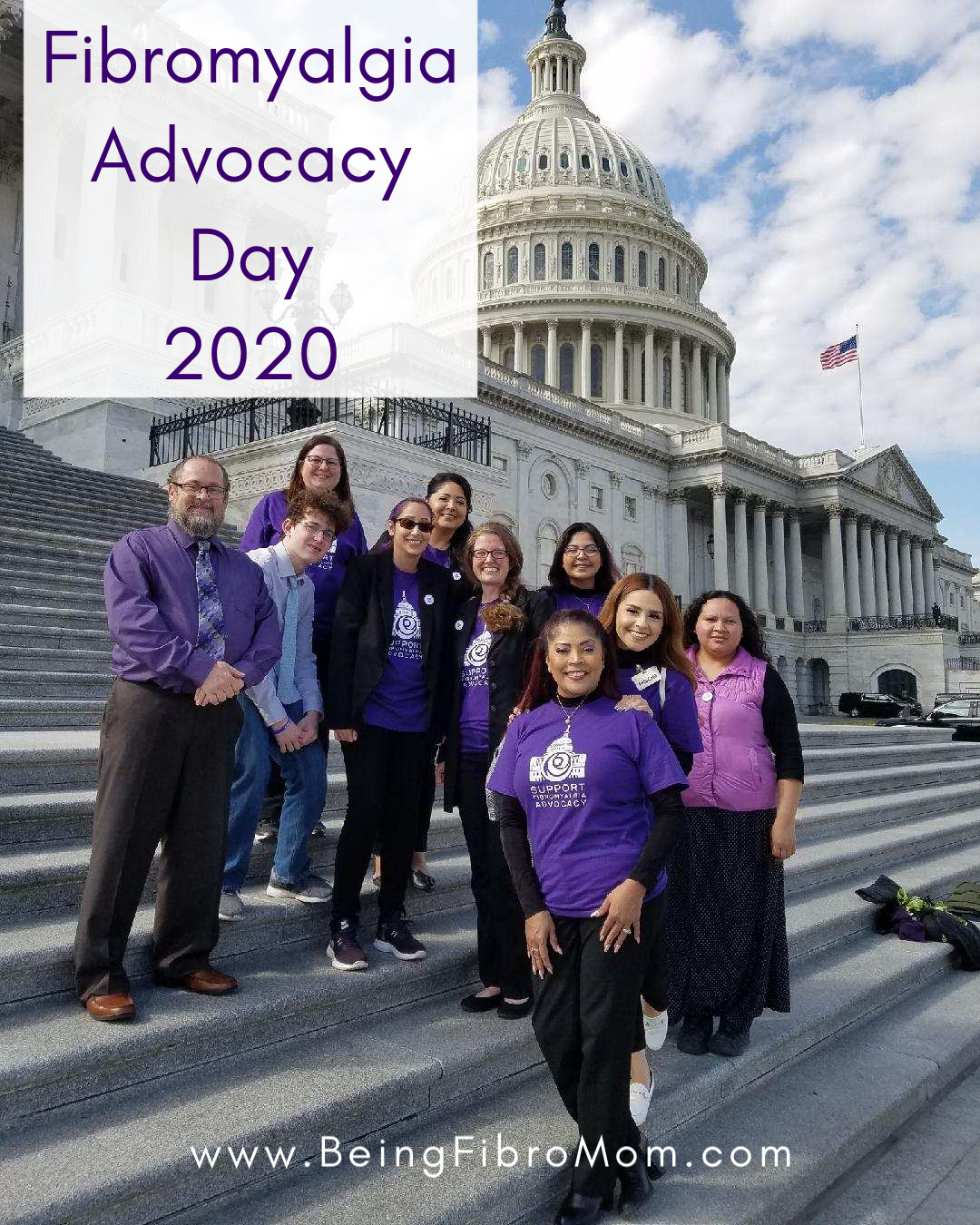
Disclosure: I get commissions for purchases made through links in this post, but these are products I recommend and have verified and/or used.
Importance of Advocacy
As stated in my article Fibromyalgia Advocacy Day: How is it impacting the fibromyalgia community?, advocacy is a HUGE part of making positive changes within the fibromyalgia community. Working hand-in-hand with awareness, advocacy is the action part of awareness. We make people aware of fibromyalgia through awareness and take action to improve all things fibromyalgia through advocacy.
Over at the Support Fibromyalgia Network, our team works hard – year-round – to make positive changes in the fibromyalgia community. Putting our heads together, we figure out what is needed for fibromyalgia patients and their families, and deliberate about what steps need to be taken to improve the healthcare of those patients, how to better support patients and their families, and get adequate funding for a far under-researched condition. Taking this information, we work on ways to get what we need in these terms. This is where awareness and advocacy are important.
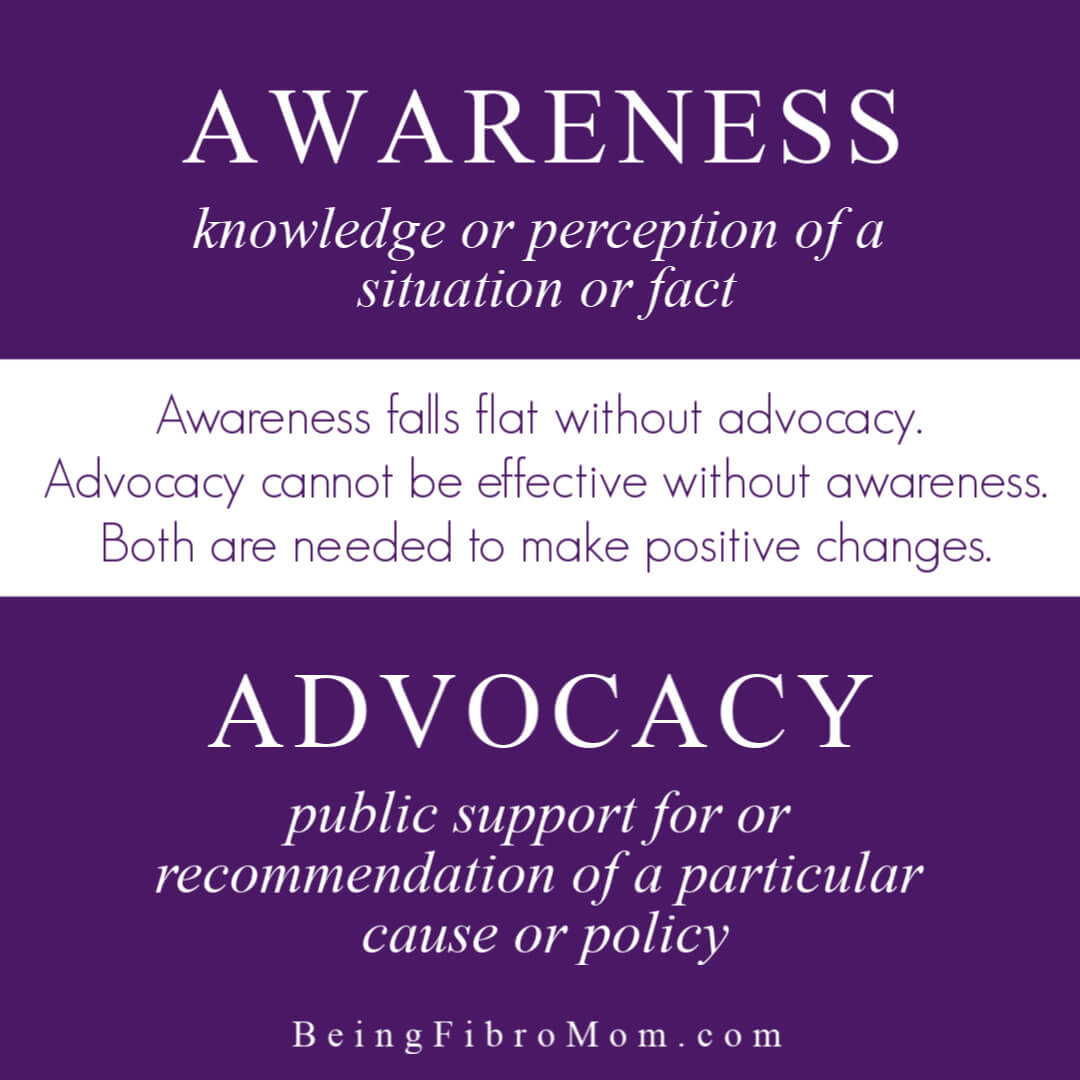
Fibromyalgia Advocacy Day March 2020
After our first successful Fibromyalgia Advocacy Day in September 2019, we quickly discovered that a March 2020 trip was needed at the Capitol. The appropriations committee was meeting and we wanted to have input about the budget in regards to fibromyalgia research.
Read more about the House Committee on Appropriations news, events, and legislation.
Read more about the United States Senate Committee on Appropriations news, hearings, and legislation.
Unfortunately, we were told March was a bit late to weigh in on this area with the budget; however, we learned what processes needed to be made in an official capacity, steps leading up to the processes, and when to visit again in order to successfully be heard in regards to increase research funding.

Fibromyalgia Advocacy Goals
Currently, our goal with fibromyalgia advocacy is to ask for support with a sustained investment in fibromyalgia specific medical research and education at the National Institutes of Health (NIH), to create a standalone fibromyalgia program within the Congressionally Directed Medical Research Programs (CDMRP), and to create a consistency of information across public health agencies. During each meeting, we discussed these points with the staff member(s) and shared our stories in relation to these goals. Here’s a breakdown of each of these points.
Increasing Fibromyalgia Research Funding
The Support Fibromyalgia Network is looking into the reasons the NIH is historically cutting the funding to fibromyalgia research. You can see the following information on the NIH categorical spending website.
Facts: The categorical spending for fibromyalgia increased from $11 million in FY 2016 to $14 million in the following two fiscal years. It decreased to $13 million in FY 2019 and is slated to decrease to $12 million for FY 2021. (It was important to include the statistics in case it was unknown. Our belief is that awareness and advocacy will help with increasing the budget for it.)
Every incremental monetary increase – however minute or large – in NIH funding for fibromyalgia specific research will increase research efforts nationwide towards pathophysiology, diagnostic tools, biomarkers, gene-gene, and the onset of Fibromyalgia in autoimmune conditions such as Lupus. Research can continue to develop with these incremental increases each year to obtain more scientific and medical findings into this condition leading to properly categorizing, preventing, managing, and curing fibromyalgia.

Streamlined Information
As more definitive information is discovered regarding fibromyalgia, reliable information can be streamlined across all health agencies such as the CDC, NIH, state DHEC, and other health agencies. This information will uniformly define an accurate disease category, the definition of fibromyalgia, symptoms, diagnostic criteria, multidisciplinary treatments, and the overlapping nature of fibromyalgia.
Reliable, consistent information would also include the opportunity for continued education of fibromyalgia for medical providers. This would result in a more defined diagnostic criterion leading to a faster diagnosis or exclusion of fibromyalgia, better treatment, and improved medical care for fibromyalgia patients. Better treatment and medical care results in lower healthcare costs and, more importantly, improved quality of life of the patient.

Veterans and Fibromyalgia
For veterans, fibromyalgia multiplies the physical, financial, and societal costs. Research supporting prevalence, prevention strategies, interventions, and treatments will reduce the number of service members and veterans living with fibromyalgia.
Watch a short video about Veterans and Fibromyalgia.
Outcomes of Medical Research
The outcomes of fibromyalgia specific medical research are beneficial on multiple levels. To support increasing research funding is to support those living with fibromyalgia and to help them obtain the treatments and health care they rightly deserve in order to live a better quality of life.
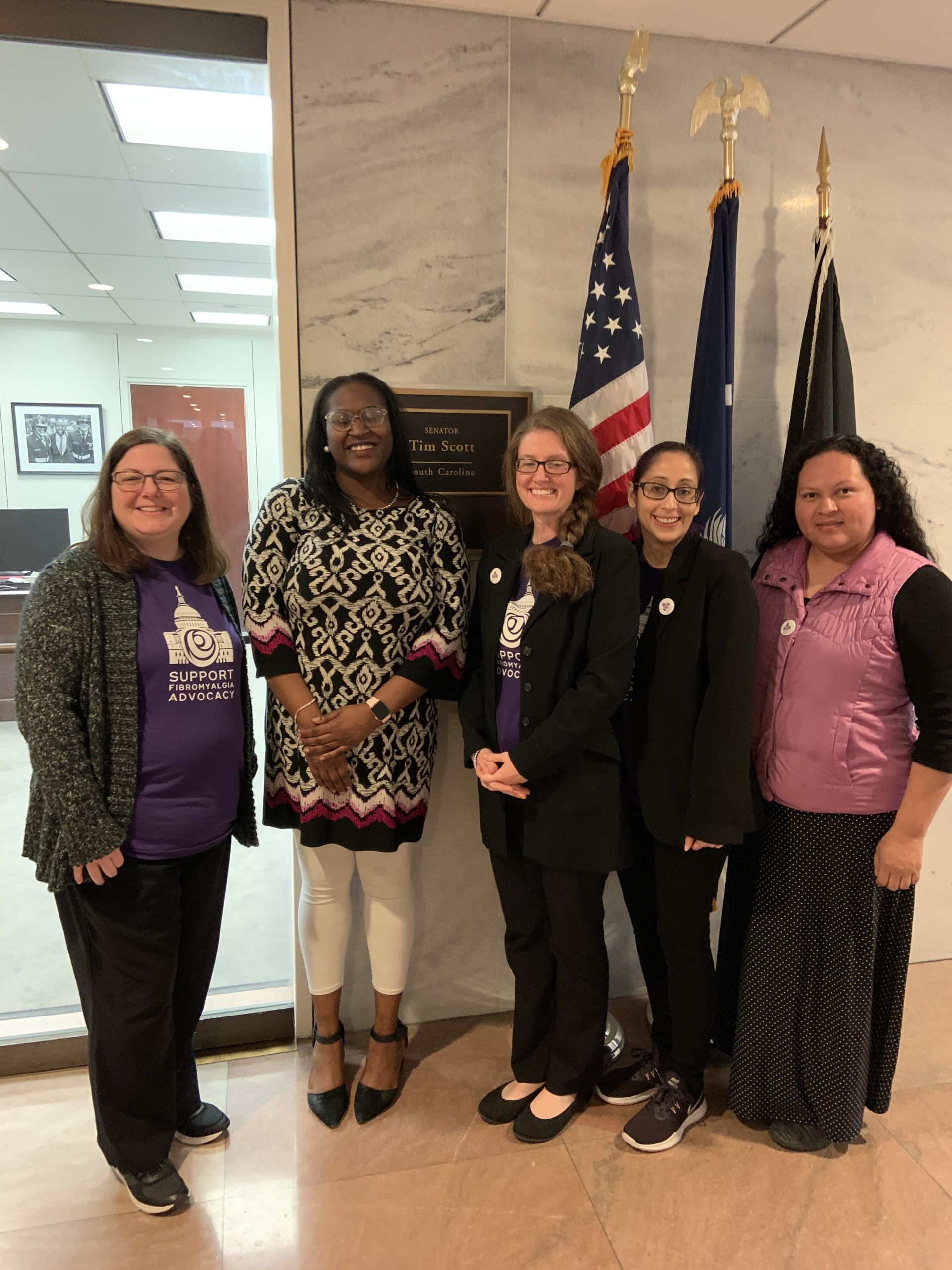
Arriving at the Hill
When we visited Capitol Hill in September, we had a day of training, and the next day at the hill. In March, we were able to have two full days at the houses since a majority of the advocates had already been on the trip in September.
Even though we were hit with the news of March being a bit late for budget input, we had many successful meetings the two days we spent at the capital. It was a bit cold when we arrived the second day and the Hill was slowly closing down due to the coronavirus pandemic, but we managed to have several meetings with states’ Congressmen.

Personalized Medicine Caucus
After a morning meeting with California Representative Eric Swalwell’s staff member, Estela (Looms4Lupus co-founder) and Suzanne (FibroMomBlog founder) were informed of the Congressman’s involvement with the new bicameral, bipartisan Congressional Personalized Medicine Caucus. Together with South Carolina Senator Tim Scott and other members, the caucus:
“...seeks to expand support for, and knowledge of, personalized medicine by enhancing public awareness of the field and advocating for policies in support of its advancement. The caucus will engage Members of Congress, staff, and the public in a constructive dialogue on how to best champion this cutting-edge approach to health care.”
This is GREAT news for the fibromyalgia community! Why? Well, you see, as the article states,
“Personalized medicine, also known as precision or individualized medicine, is an emerging field that utilizes genetic and genomic testing to help improve patient diagnoses and customize medical treatments. By combining this information with patient records, values, and individual circumstances, physicians can work with patients to come up with comprehensive and holistic treatment plans that are best suited for them.”
By using genetic and genomic testing, we could see indicators for fibromyalgia if they are there. If they are present, then it makes diagnosis faster to obtain. Since fibromyalgia is no longer a diagnosis of exclusion (meaning little information is known about a condition and if nothing else fits, then that diagnosis must be it), this personalized medicine is a step in the direction of receiving quicker diagnosis AND a better, more effective treatment plan.
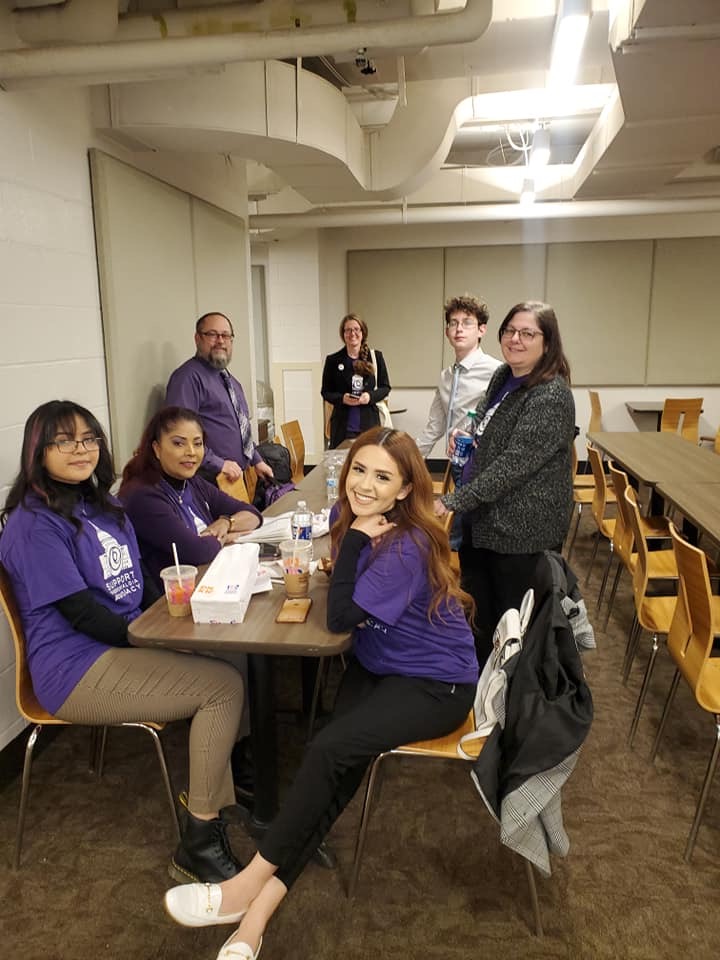
An Unexpected Surprise
As we were winding down from our meetings on the second day, we took a leisurely stroll in through the small park surrounding the Capitol building and across the building steps. Our intention was to take a photo on the Capitol steps (which we did as you can see in the photo at the top of this post), but as we were finishing, we noticed a small photoshoot also happening on the steps. Naturally, we stood by to watch a Congressman (we didn’t know who right away) has his photo taken with his adorable retriever.
The dog was focused on us watching, so Estela stood behind the camera to pull the dog’s attention towards the photographer. We gathered behind her to watch. It was a beautiful photo! (I hope to obtain a copy of it to see how it turned out.) Afterward, the Congressman introduced himself and asked the meaning of t-shirts. We were happy to tell him our purpose and he was engaged with the entire group. At the end of the chat, his photographer took a photo of our group with the Congressman (who found out to be Representative Fred Upton from Michigan).
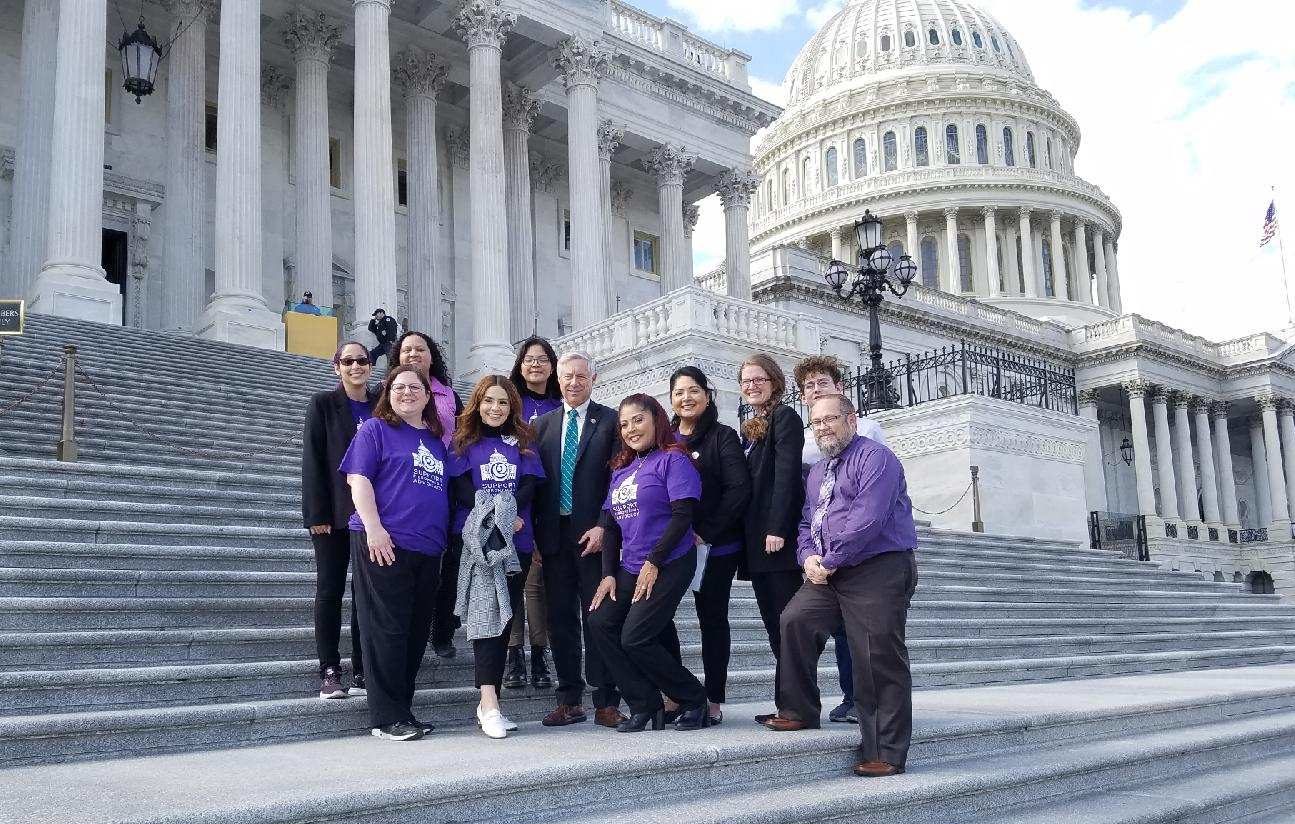
More Photos and Updates
From the moment I arrived until the moment I left, I was engaged with my surroundings and loved the time together with the other advocates. My apprehension of leaving my kiddos behind for only the second time in their lives wasn’t as bad as it was the first time I did it with the September trip. For this I was thankful! I was able to enjoy my time in DC more so the second time around. (Here are some Tips for Traveling Without Your Kid I wrote for The Fibromyalgia Magazine based on my experience.)
Here are some photos from our time together.

Throughout the time we were there, we took advantage of the buildings we saw and enjoyed ourselves when walking between the Senate and House of Reps. The weather was perfect, too – not too hot and not too cold.



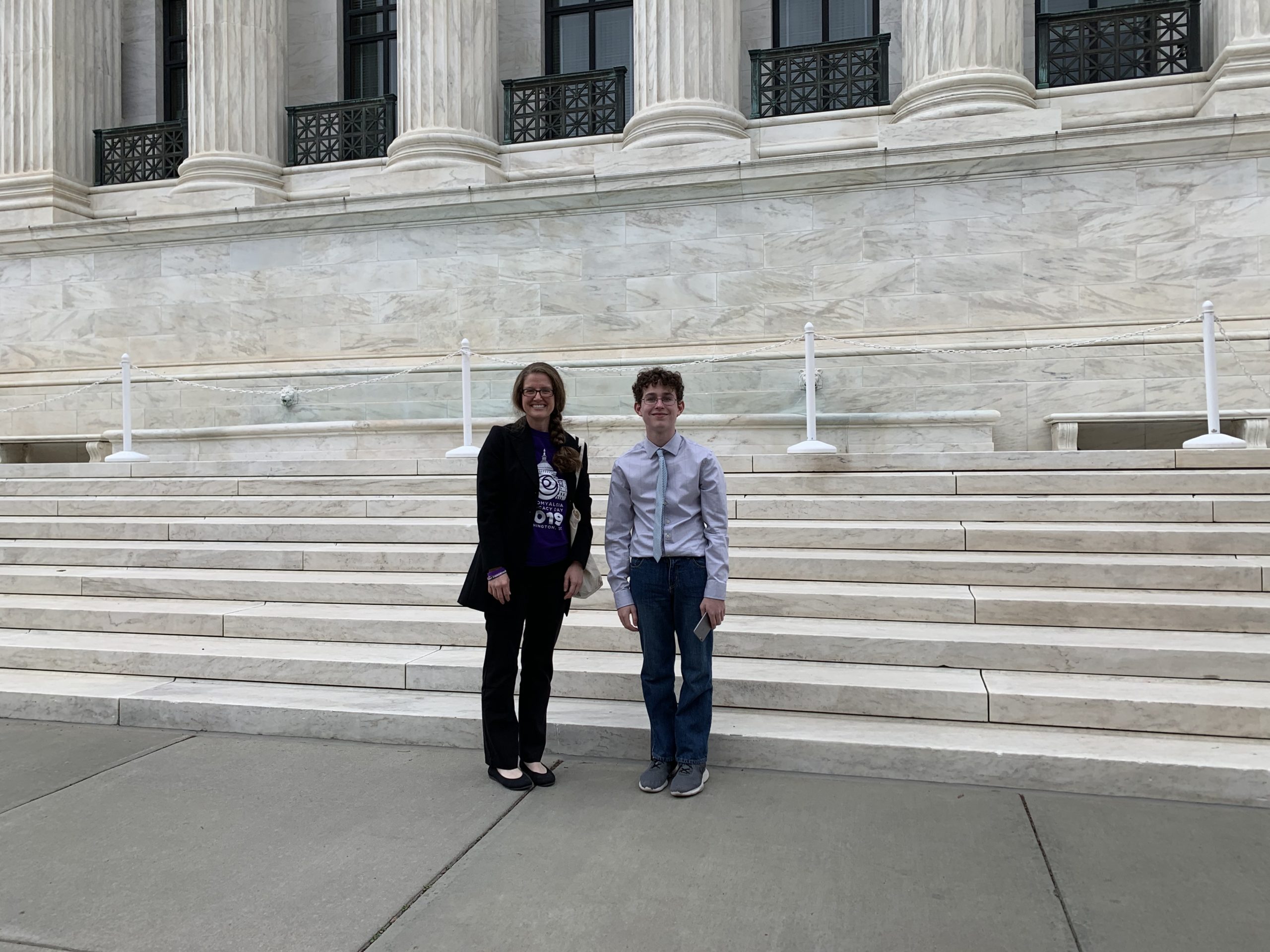
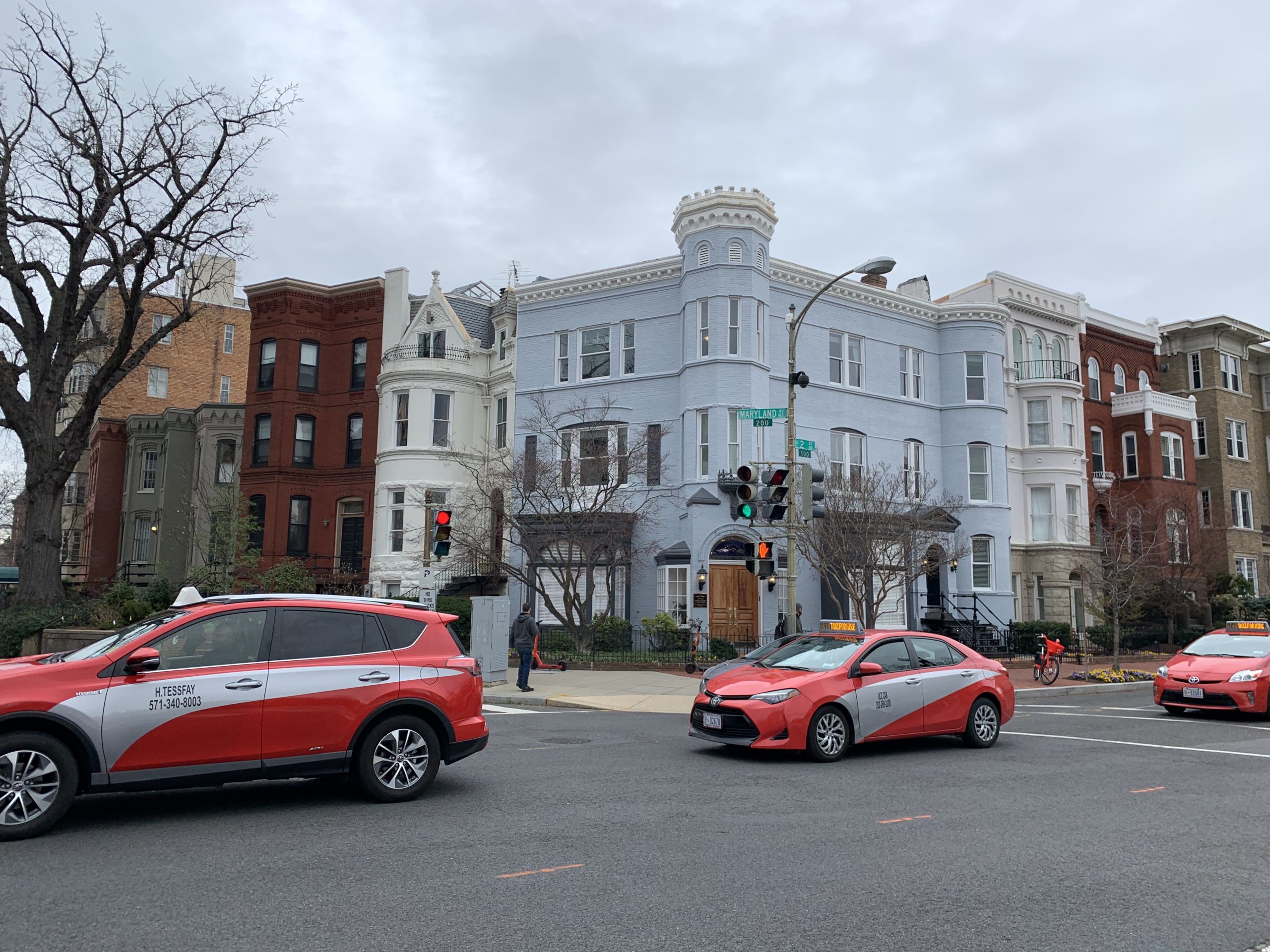
Rick and I met online through the fibromyalgia community some years ago. He was unable to attend advocacy day in September, but he and his son, Jack, were able to attend in March. I was so excited to finally meet him in person and spend the next few days with him!

Even though I’ve been in the Senate before, I still find the interior so impressive!
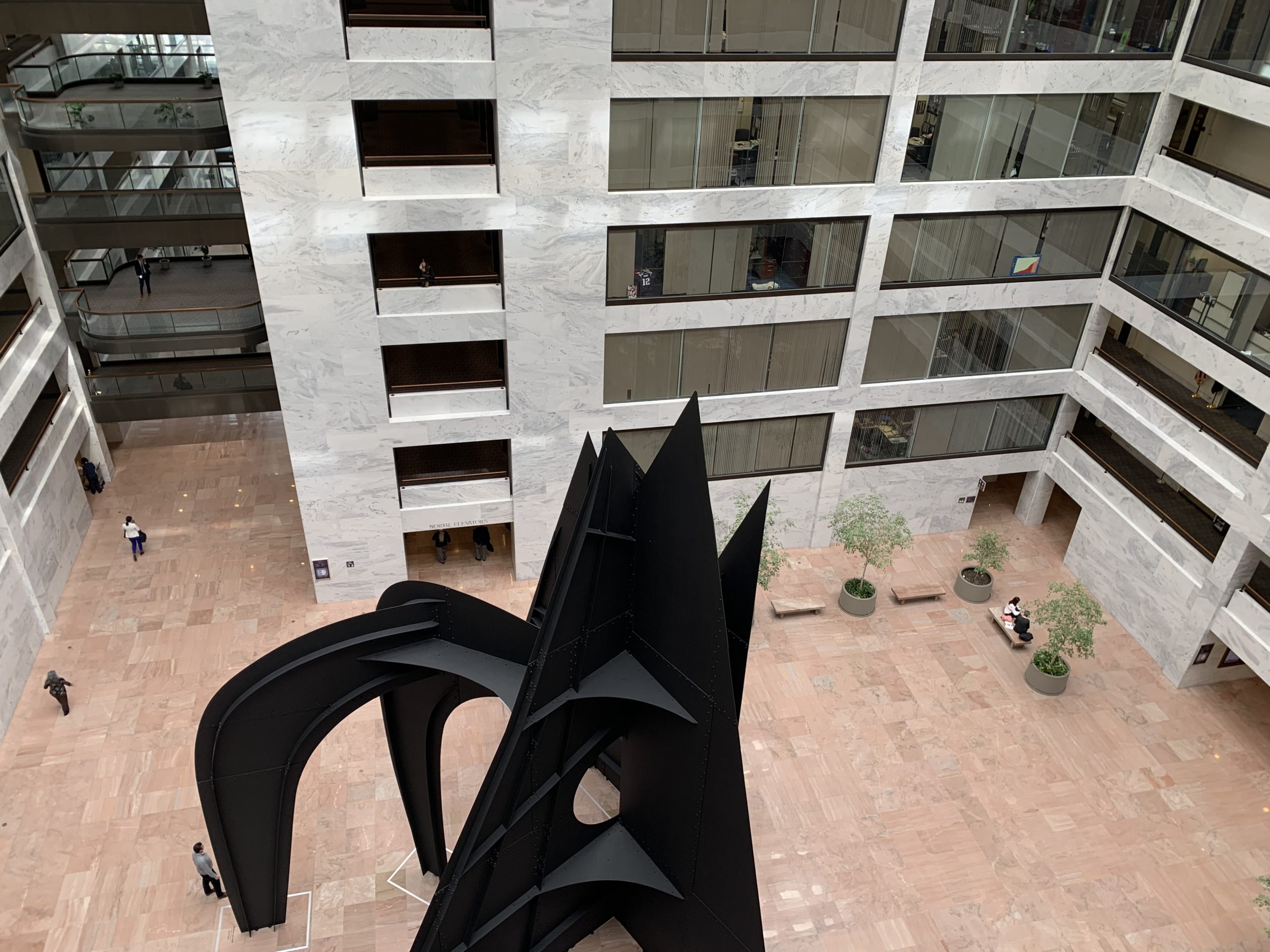
Naturally, I had to get a selfie with Suzanne in front of the structure.
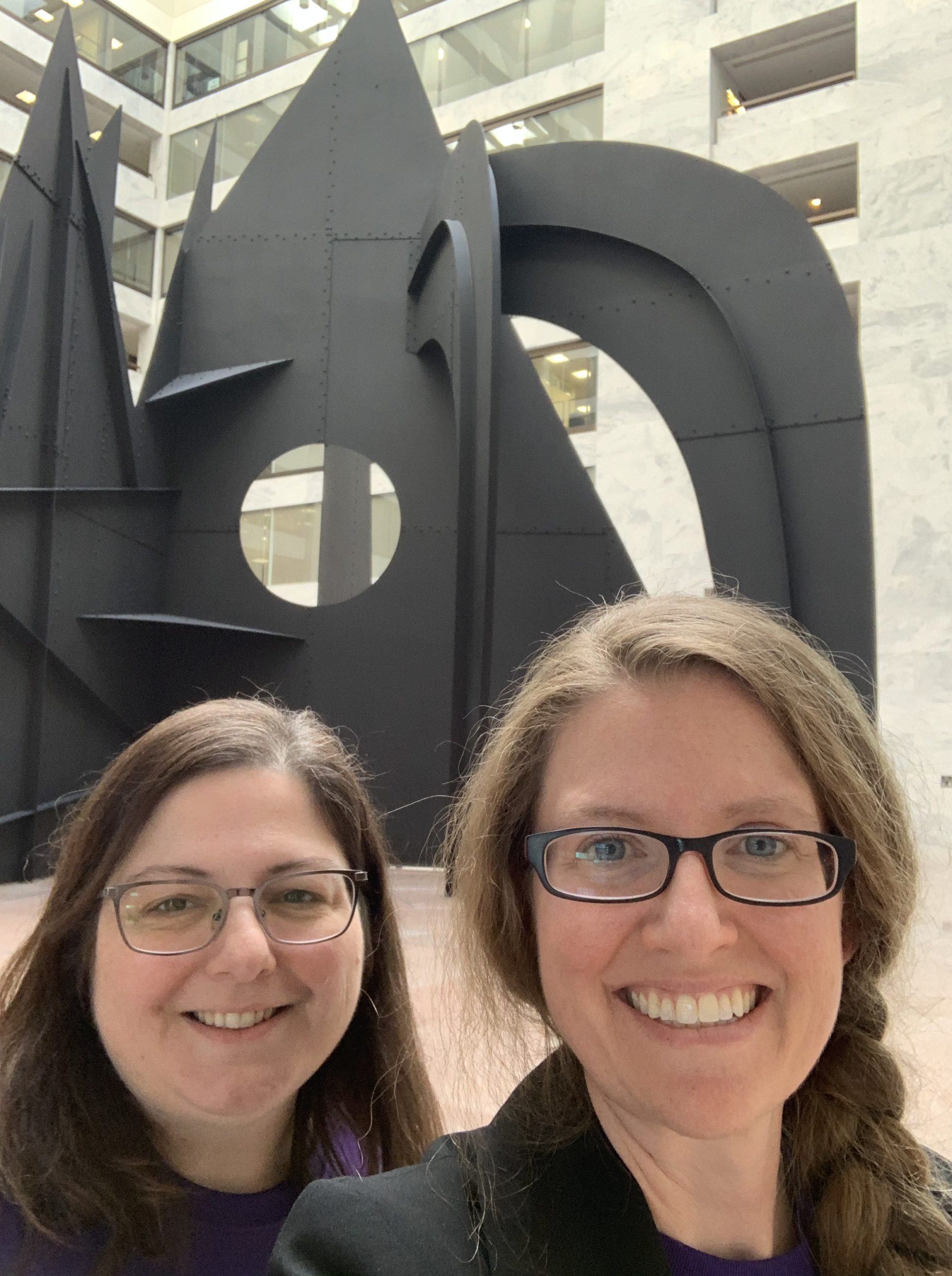
Once all of our meetings were complete, we met in the lobby and a few group photos were taken. Jazz hands included, too, of course!


I’m always in need of a restroom, and during a quick pit stop at one of them, I took a selfie to send to my kiddos. What is with photos in the bathroom with people?

Concluding Advocacy Day
The entire group had an informative and enjoyable time with the Spring Fibromyalgia Advocacy Day trip. While we wait to attend the next advocacy day, we are working hard to formulate our next steps to help with change in the fibromyalgia community. Keep posted with updates on the Support Fibromyalgia Network Facebook page.
Since my oldest son lives in the DC area with his dad, I stayed an extra day in the area to spend some time with him. Our hotel had a fire pit and was across the street from the mall (which was largely closed except for a few stores). We didn’t have long together, but we loved the time we did have.
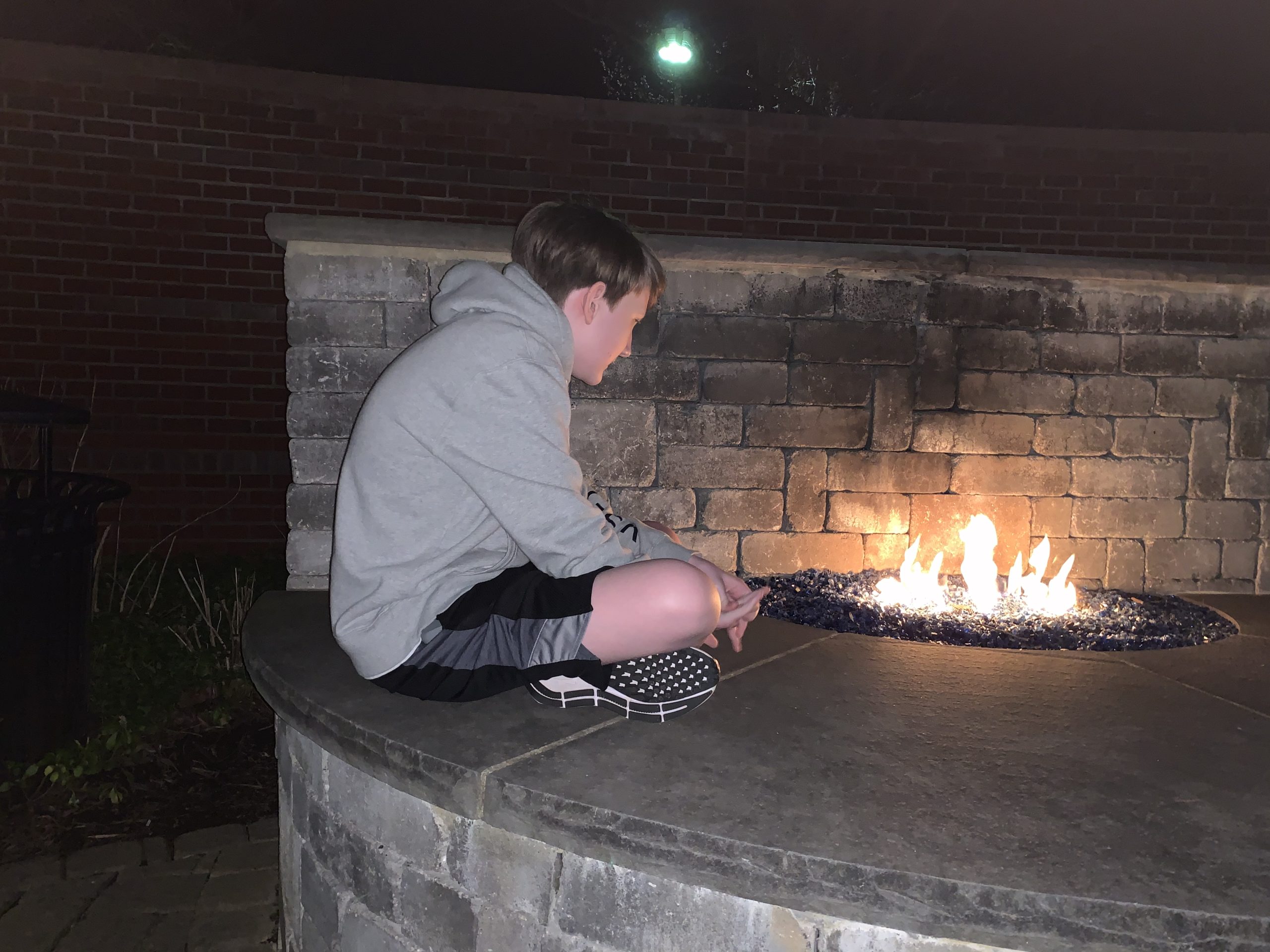
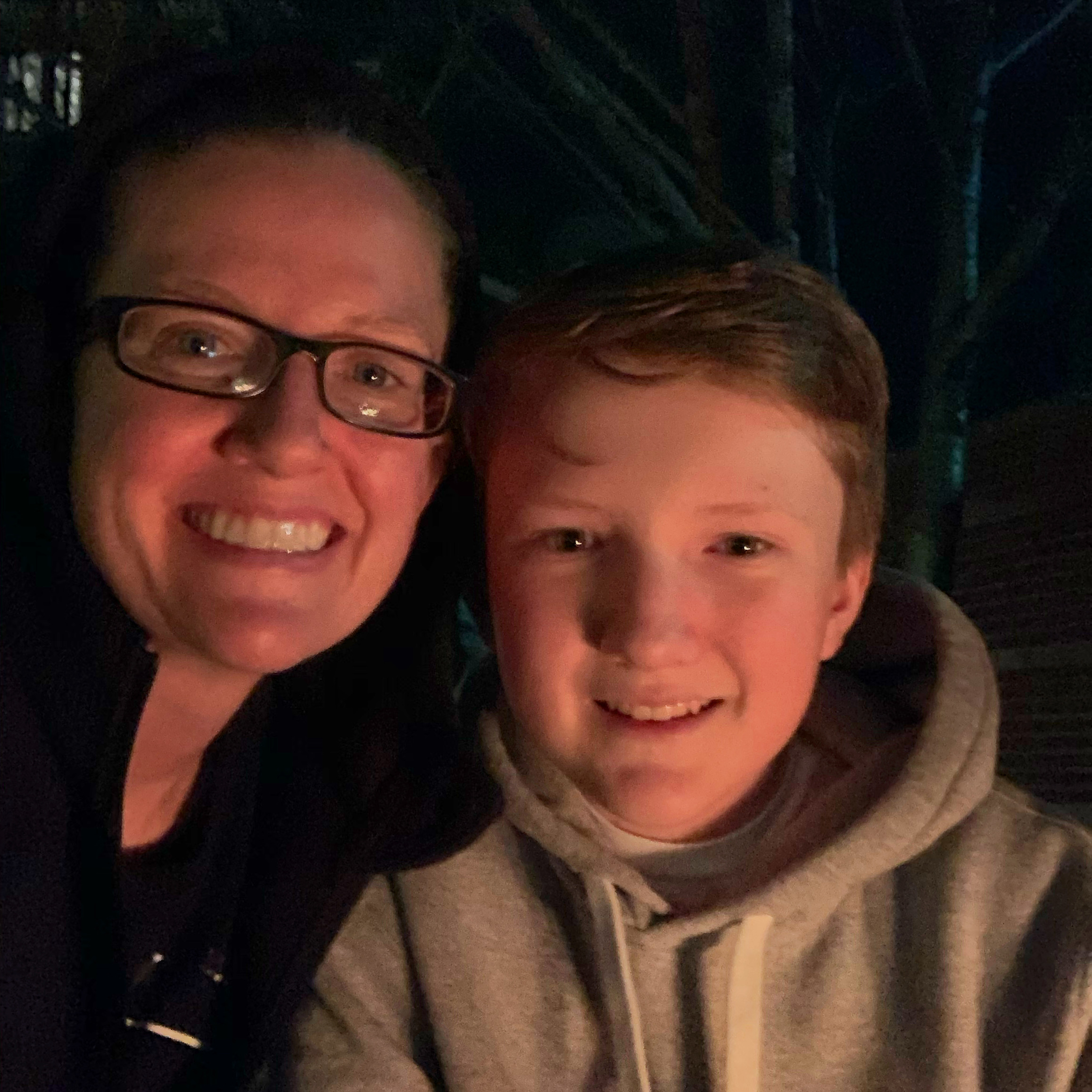
I even had some majestic views of the city as I drove around the outer skirts on my way to visit my son. I pulled over to observe and take in the serenity of it.



This gives me chills after reading your post and watching your video from your day. How exciting! And now, to look back that this was at the very beginning of COVID-19 shutting everything down, wow! Thank you for all you and the group did to further advocacy of funding for research, updated definitions, and personalized medicine.
Tomorrow, I get to do this, virtually. Goods and bads of that. But, I’m pumped and hope that this keeps pushing the Fibro ball towards the goal.